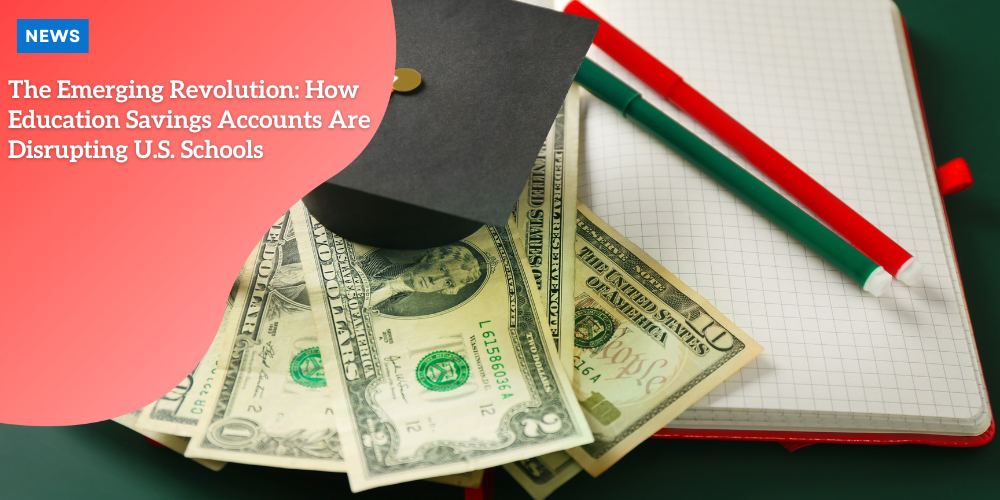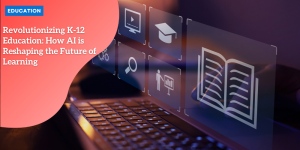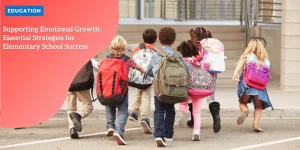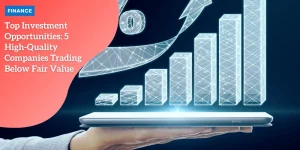The Emerging Revolution: How Education Savings Accounts Are Disrupting U.S. Schools

Why Traditional Public Schools May No Longer Remain “Free” in the Era of School Choice and Personalized Education
Over the past few decades, the American K–12 education system has largely remained immune to the wave of Disruptive Innovation that has reshaped numerous industries — from retail and telecommunications to media and manufacturing.
Anúncios
This status quo, however, appears to be shifting as new financial mechanisms and educational models empower families to rethink how schooling is accessed and delivered.
The Historical Immunity of U.S. Public Schools to Disruption
As Robert Pondiscio recently articulated, K–12 education has been notably resistant to the kind of radical, market-driven innovation seen in other sectors.
Unlike consumer goods or technology industries, where startups and new entrants have often upended incumbents, education’s traditional framework — dominated by public schools — has remained relatively unchanged.
Anúncios
For instance, just 15 years ago, the educational content market was monopolized by a few dominant textbook publishers, namely McGraw-Hill, Pearson, and Houghton Mifflin Harcourt (HMH).
These companies primarily offered printed textbooks, which formed the backbone of most school curricula nationwide.
Since then, digital-native companies such as Amplify, Great Minds, Curriculum Associates, and Imagine Learning have begun to infiltrate the previously insular core curriculum market.
Anúncios
Even so, the textbook giants have adapted, morphing into modern educational technology providers to stay relevant.
Despite this, the larger structure of compulsory public schooling has largely remained impervious to disruption.
Why Disruptive Innovation Has Historically Been Difficult in Public Education
Two primary factors have inhibited true disruptive change in U.S. public schools:
-
Compulsory Attendance and Universal Access: Since attendance at public schools is mandatory for most children, and these schools are widely accessible at no direct cost to families, the concept of “nonconsumption” — a key ingredient for disruptive innovation — has been minimal. Unlike markets where consumers can freely choose to purchase or forgo a product, public education has traditionally been a service everyone must consume.
-
Absence of “Overserved” Consumers: Another key aspect necessary for disruption is the presence of “overserved” consumers—those who pay for features or services beyond what they need or want and might be willing to switch to a simpler, cheaper alternative. In public education, because schools have been “free,” there has been little incentive for families to trade down or customize services.
Consequently, without significant nonconsumption or overserved consumers, disruptive innovation could not gain traction within the public school system itself.
Existing Gaps Within Schools: The Seeds of Disruption
However, disruption has been attempted and somewhat realized within schools at the level of course offerings and supplemental services.
-
Many students have found themselves unable to enroll in desired classes due to scheduling conflicts or resource constraints.
-
Tutoring, remediation, and specialized support services have often been unavailable or inaccessible for students in need.
These gaps represented pockets of nonconsumption within the school ecosystem, which inspired the 2008 book Disrupting Class to focus on how technology could transform the way classes are delivered, thereby introducing disruption within schools rather than to schools themselves.

Why ‘Disrupting Class’ Didn’t Result in Widespread School Disruption
Despite technological advances, most schools simply integrated new tools into existing class structures rather than transforming the schooling model.
The entrenched value network — including policies, regulations, school boards, teacher unions, and funding mechanisms — maintained the traditional schooling model’s dominance.
Therefore, even with innovative classroom technologies, the overall public education system resisted fundamental change.
The Rise of School Choice and Its Role in Educational Innovation
Fast forward to the present: approximately 40% of American students now attend schools of choice, which means they are not bound to their neighborhood district schools.
This shift has fostered increased competition and diversity in educational options, ranging from charter schools to private schools receiving public funding.
Among these innovations, Education Savings Accounts (ESAs) stand out as a transformative development with the potential to spark true disruption.
What Are Education Savings Accounts (ESAs) and How Do They Work?
ESAs allocate a specific amount of public funding directly to families, deposited into a dedicated savings account to be spent on a broad range of educational goods and services. These include:
-
Enrollment at private or charter schools
-
Individual classes and online courses
-
Tutoring and test preparation
-
Therapy and special education services
-
Educational products such as software and books
Unlike traditional vouchers, ESA funds can be saved year-to-year if unspent, allowing families to accumulate resources and tailor education over time.
How ESAs Incentivize Families to Make Tradeoffs and Value-Based Choices
With ESAs, families are empowered to evaluate the relative value and cost of various educational services and make strategic decisions that best meet their child’s needs. This shift creates an economic framework encouraging:
-
Price sensitivity: Families consider the cost-benefit ratio of educational offerings.
-
Customization: Tailoring educational experiences by combining various services rather than accepting a one-size-fits-all model.
-
Market responsiveness: Providers innovate and compete to offer lower-cost, higher-quality, or more specialized services.
Thus, ESAs create conditions where tradeoffs and selective consumption become integral, fostering an environment ripe for disruptive entrants.
The Conditions for Disruptive Innovation Are Finally Being Met
Because ESAs enable families to spend their education dollars flexibly, the following critical elements for disruptive innovation are emerging:
-
Presence of overserved consumers: Families currently enrolled in traditional public schools but desiring more personalized or efficient educational mixes.
-
Nonconsumption opportunity: Students whose needs are unmet by existing school offerings, such as niche classes or specialized therapies.
-
Market entry point for low-cost providers: Technology-driven education startups and alternative school models can serve these customers initially underserved or overserved by the current system.
-
Potential for incremental improvement: New providers can start with simpler offerings and gradually improve to challenge incumbent schools on quality and cost.
The Changing Perception of Traditional Public Schools as “Free”
As ESAs grow, families remaining in traditional public schools may begin to view the system as “expensive” rather than free because:
-
By choosing to stay in the neighborhood school, they forgo thousands of dollars in ESA funds that could have been used for customized educational services.
-
This opportunity cost may lead families to see traditional schooling as a costly bundle of services, some of which may be irrelevant or underused for their children.
This evolving mindset challenges the long-standing perception of public schools as costless and fixed in their offerings.
| Characteristics | Details |
|---|---|
| 🏫 Affordable Education | New educational providers offering affordable, tailored options for families unsatisfied with traditional schools. |
| 🔄 Hybrid Models | Educational models blending online, in-person, and supplemental services. |
| ⚔ Competition & Innovation | Increased competition driving innovation and cost-efficiency among all school types. |
| 🎯 Student-Centric Focus | Enhanced education focusing on individual success rather than uniform delivery. |
| 🚀 Market Impact | Potential to fundamentally shake the educational landscape and accelerate personalized learning. |
Toward the Future: Are We on the Path to Disrupting Schools?
The widespread adoption of ESAs may represent the tipping point for true, systemic disruption in American public education.
By shifting control and spending power to families, the education market opens to new entrants, technologies, and pedagogies.
Should this trend continue, it may be possible to reimagine schooling entirely, moving away from rigid district models to dynamic ecosystems of diverse educational opportunities tailored to the unique needs of every student.
Conclusion: The Promise and Challenge of Disrupting U.S. Schools
While traditional U.S. public schools have remained resistant to disruption for decades, the rise of Education Savings Accounts and school choice signals a new era of opportunity and transformation.
By incentivizing families to make value-based educational decisions and enabling market competition, ESAs create fertile ground for innovation and greater customization.
However, this transition also poses challenges, including ensuring equitable access, maintaining educational quality, and balancing regulation with innovation.
The future of schooling may depend on how these forces are managed as disruption unfolds.





